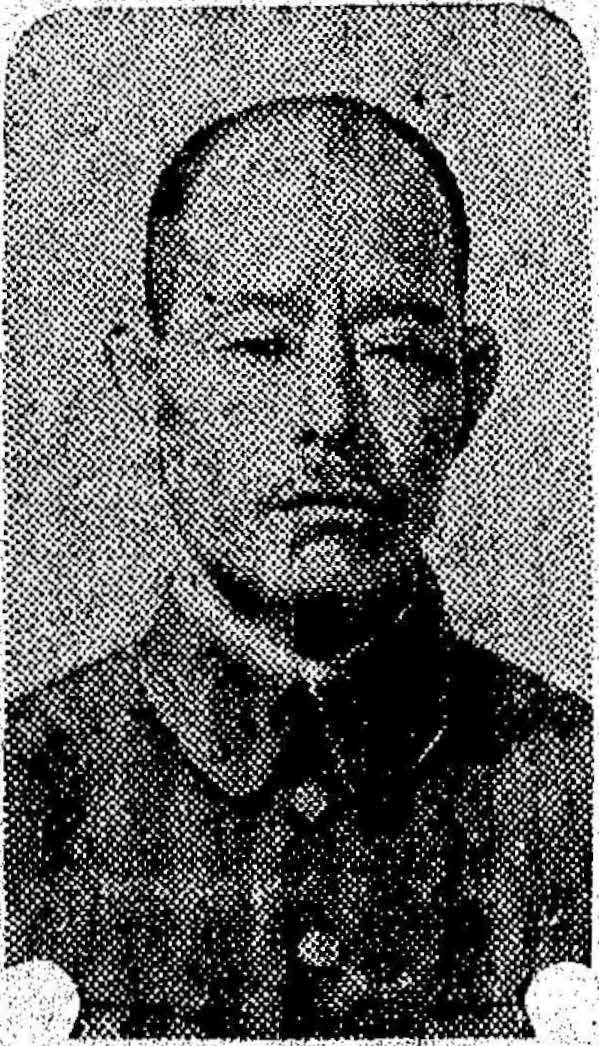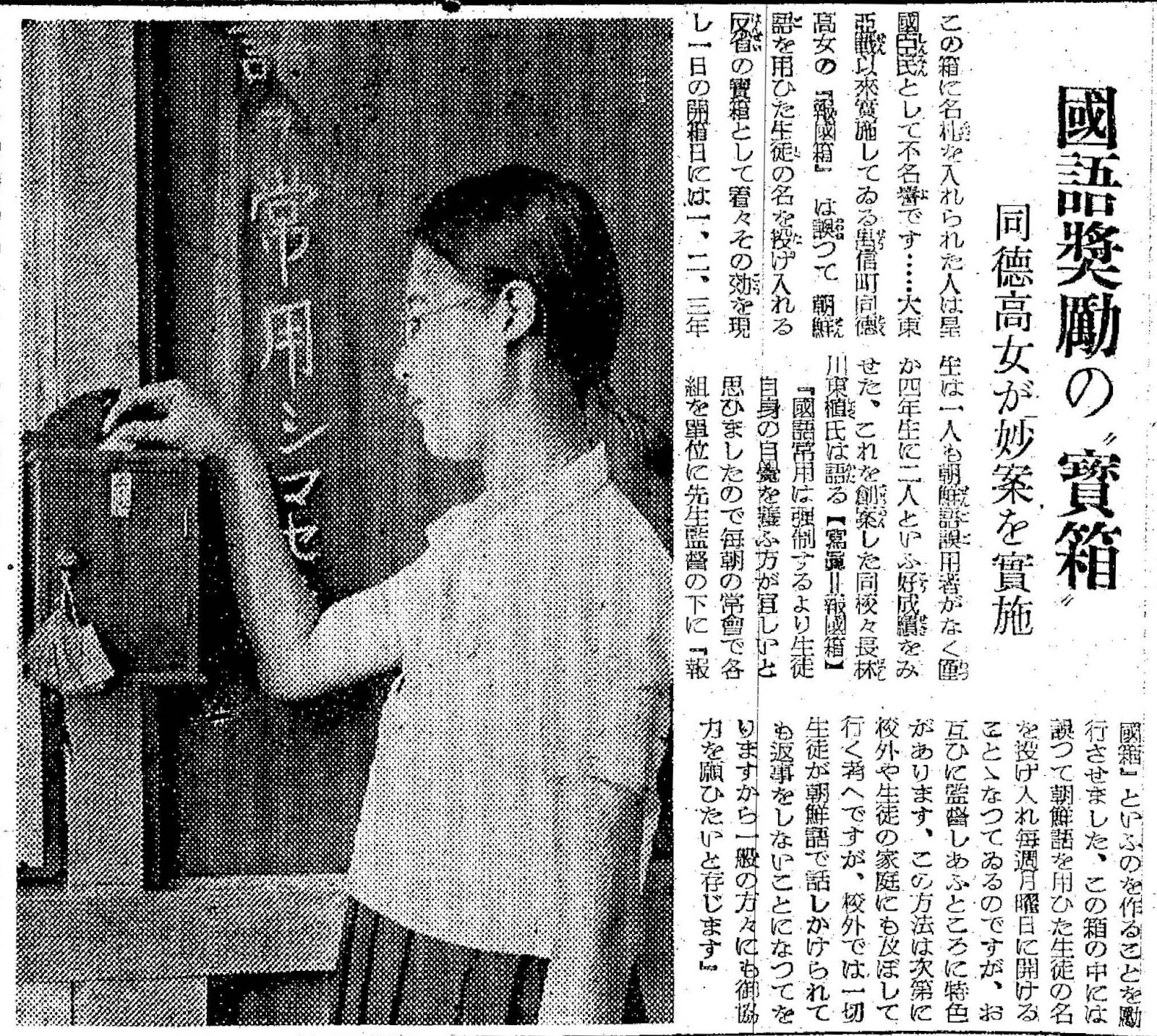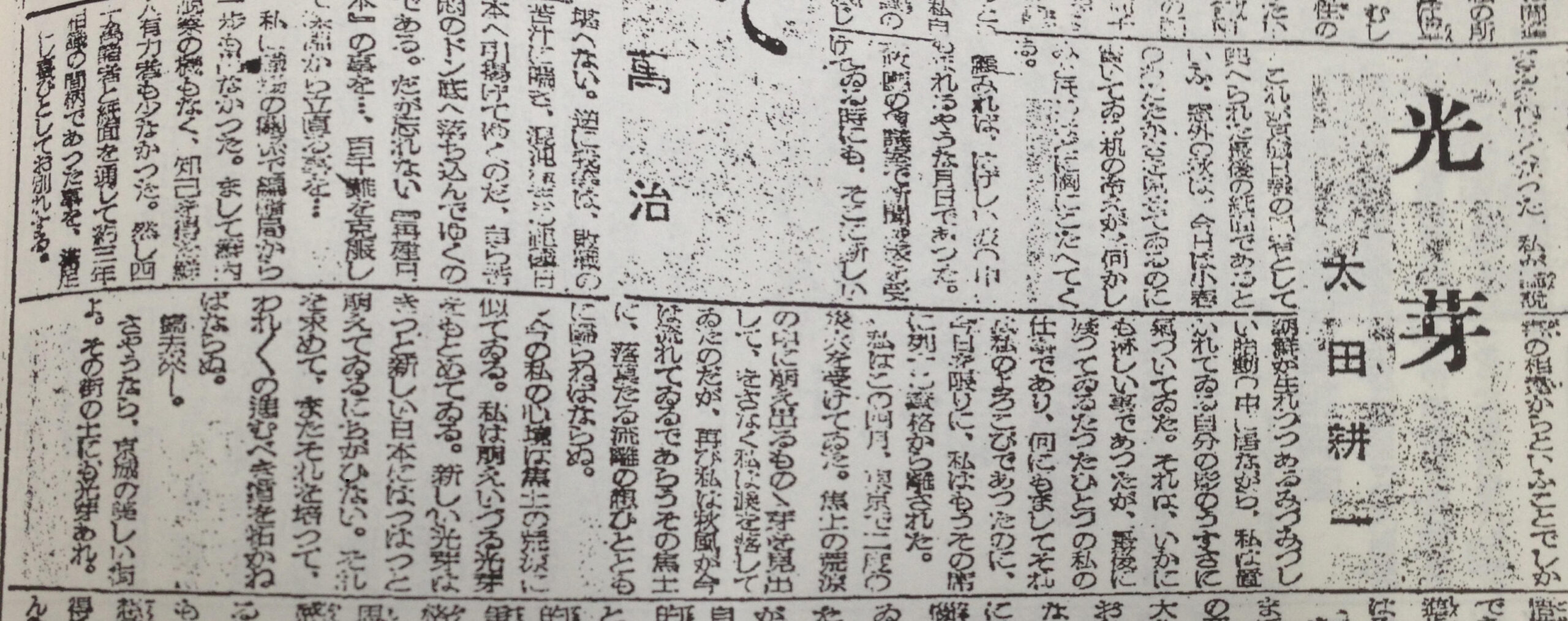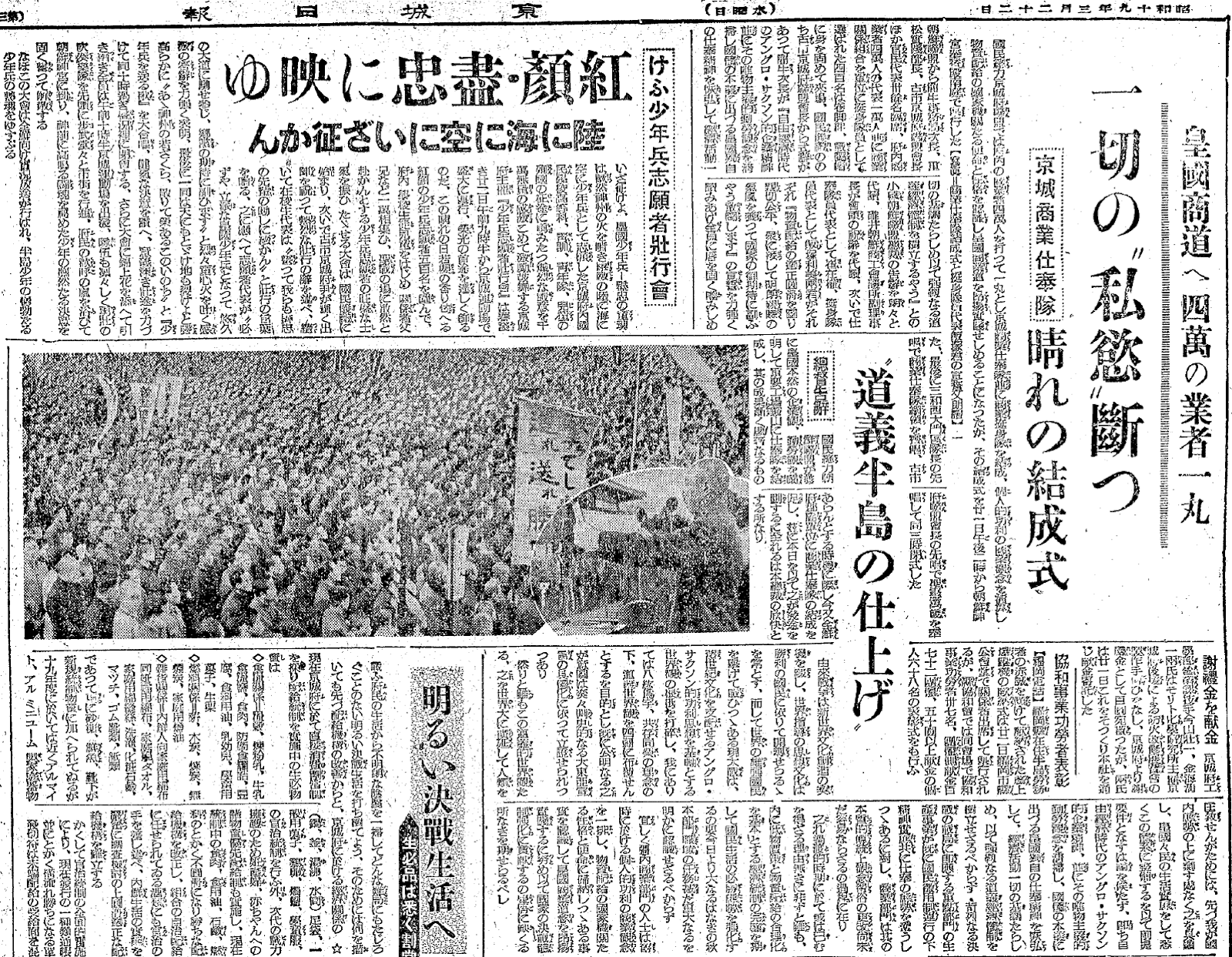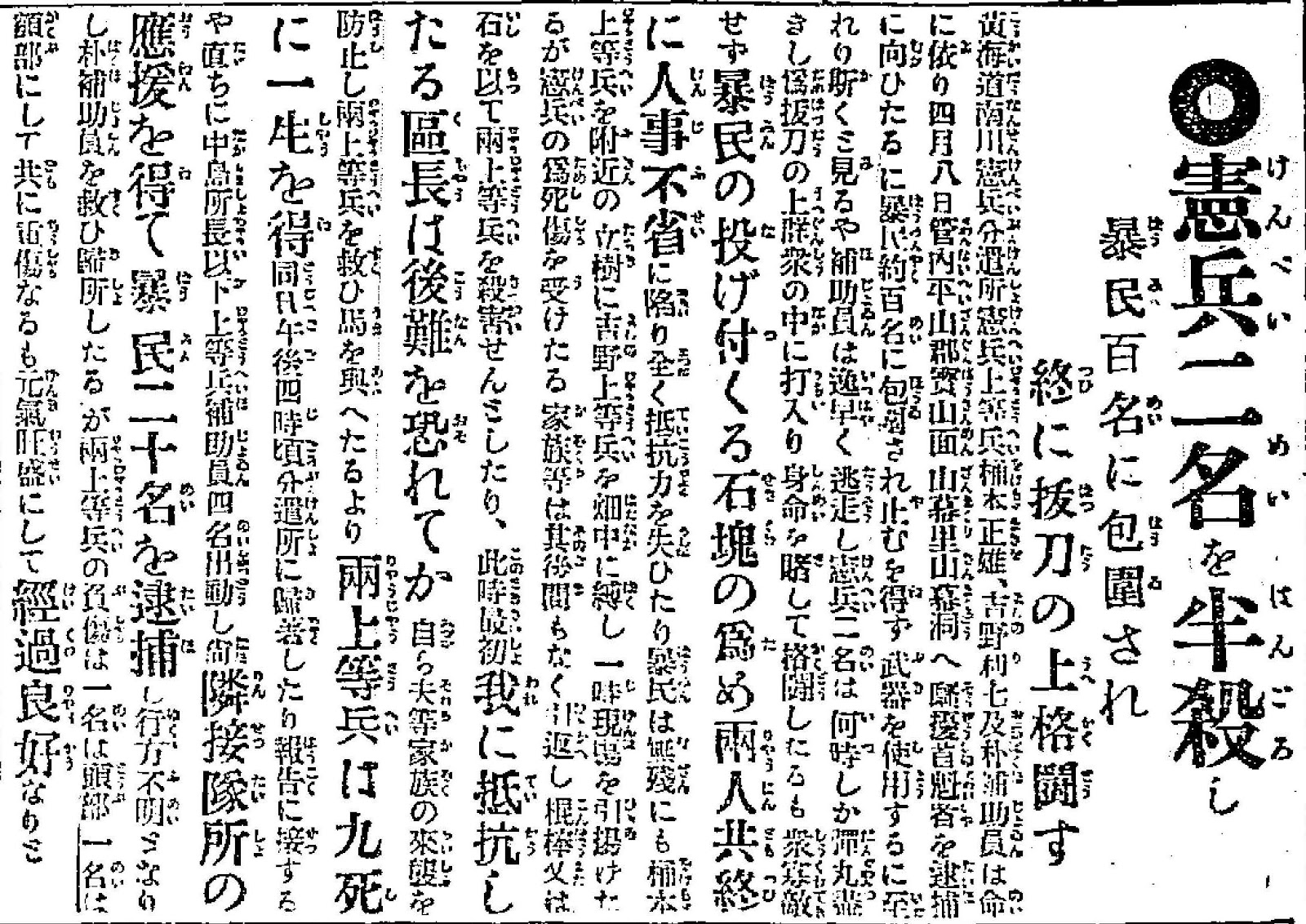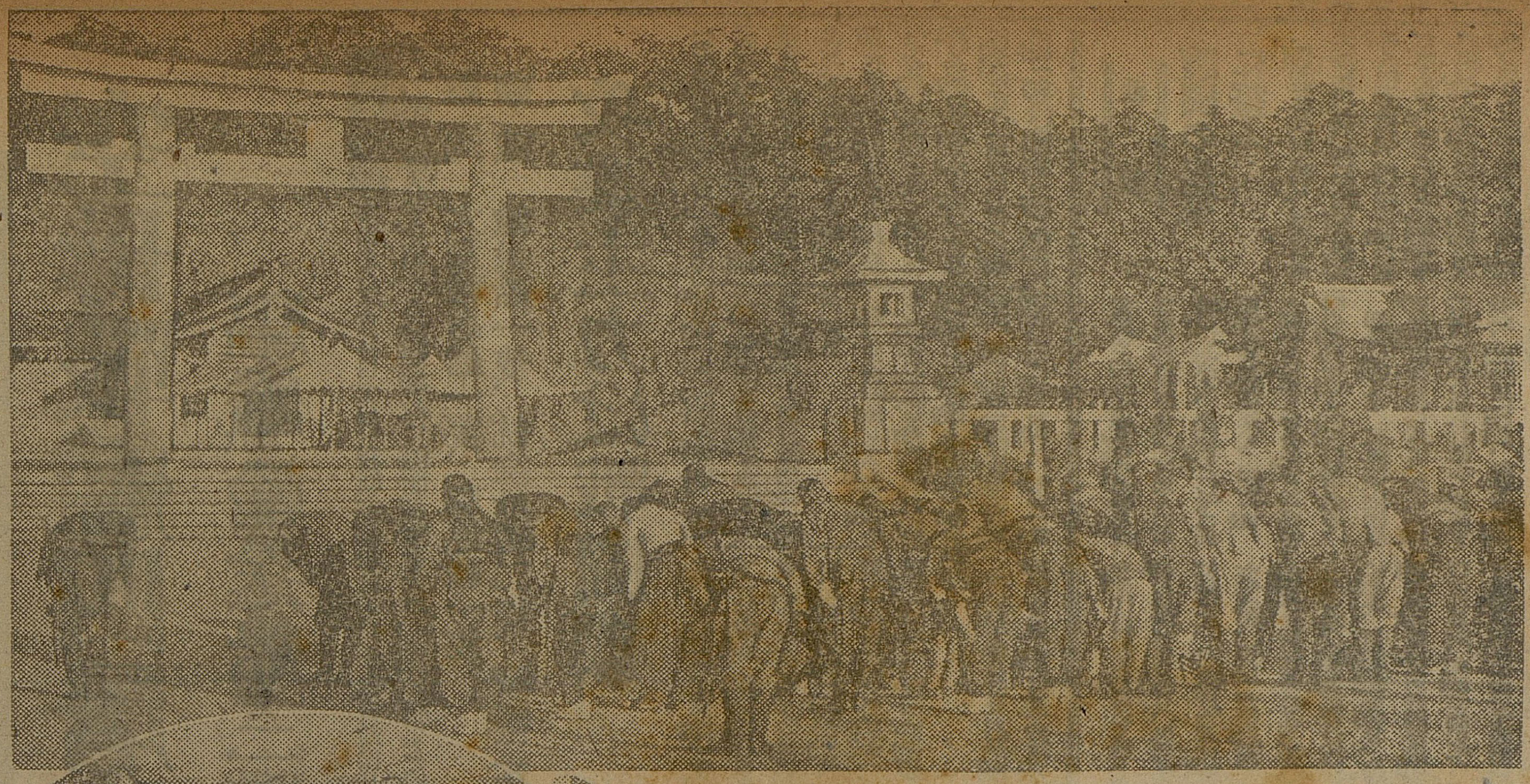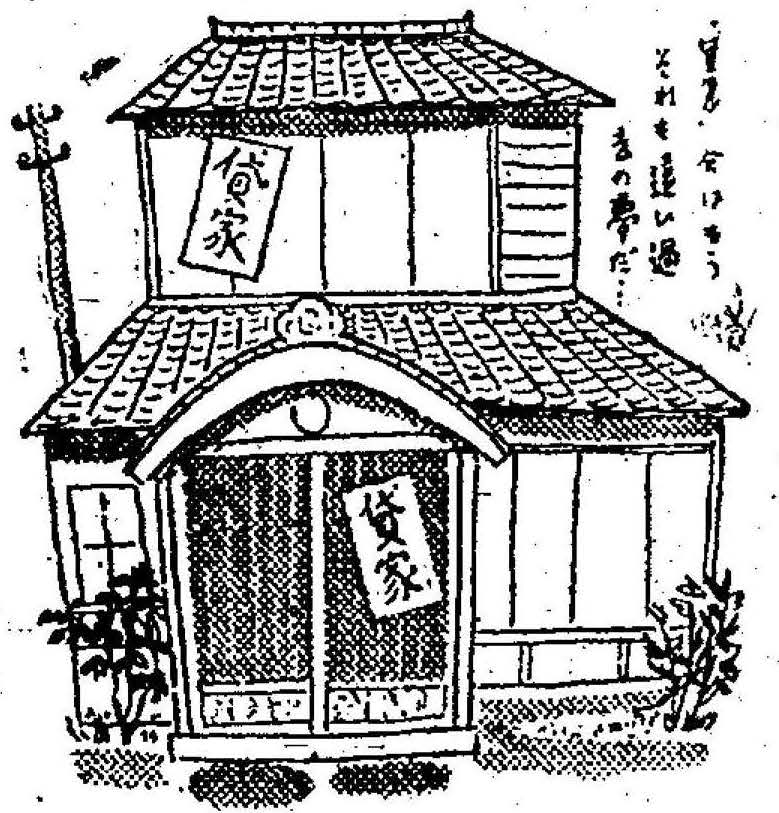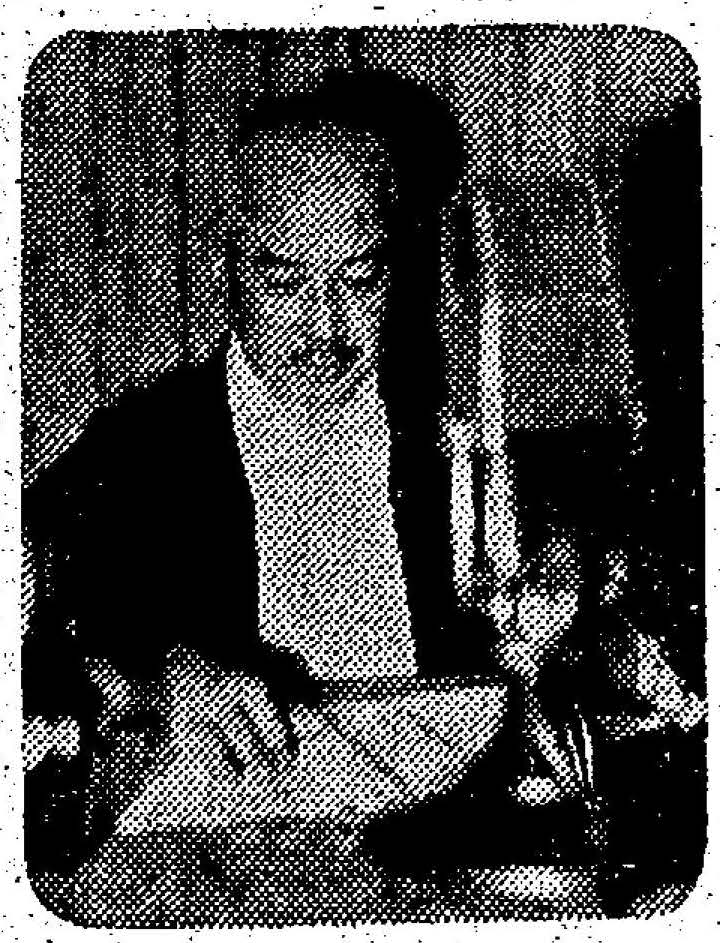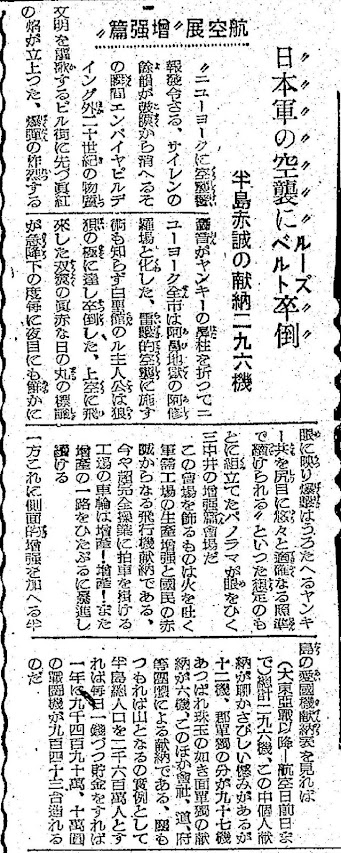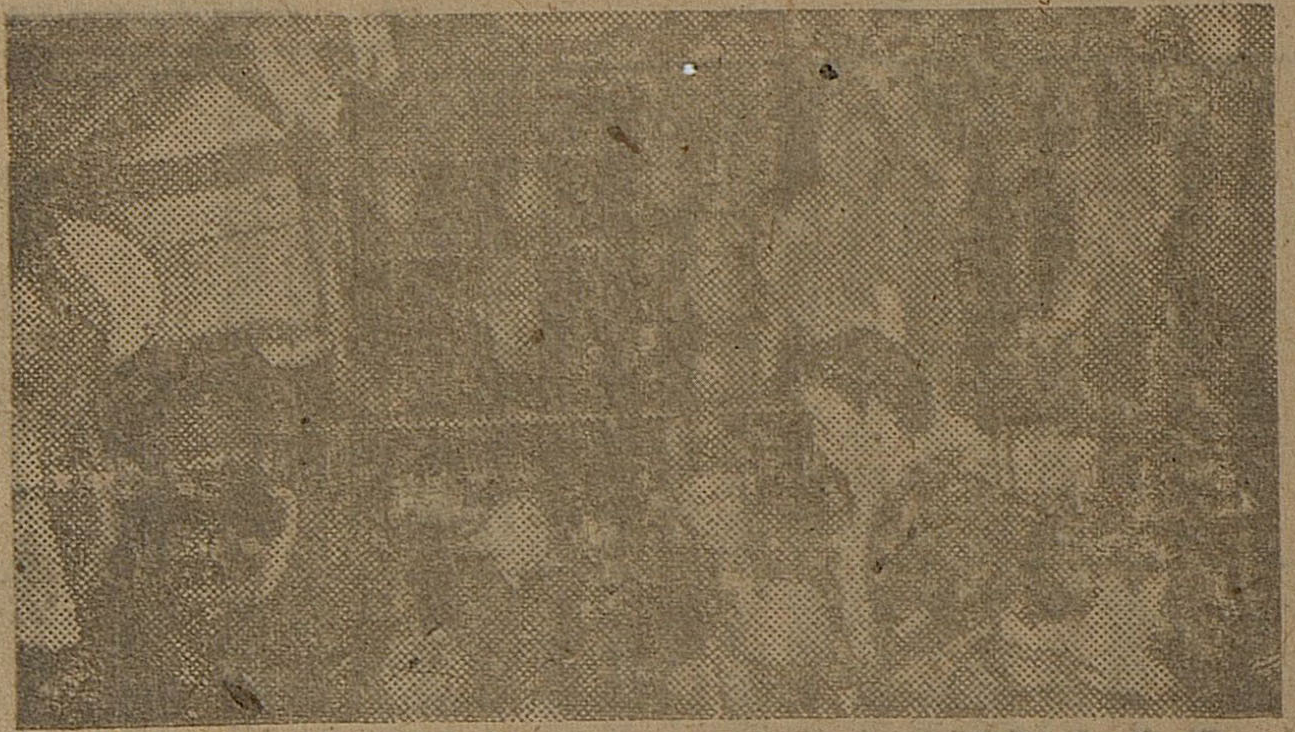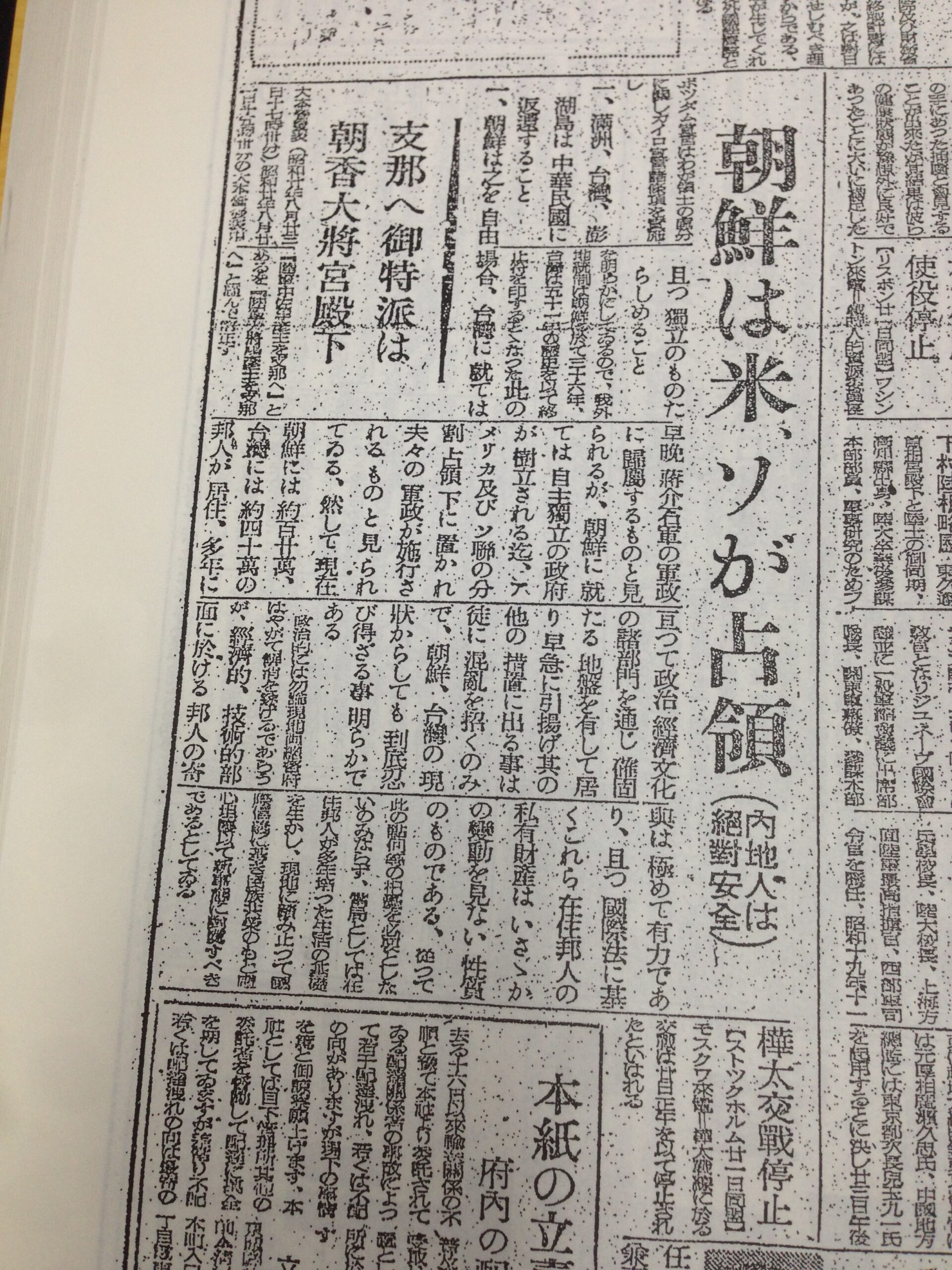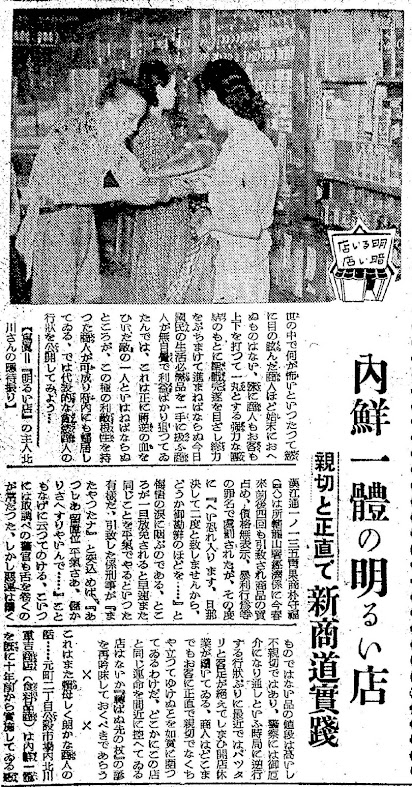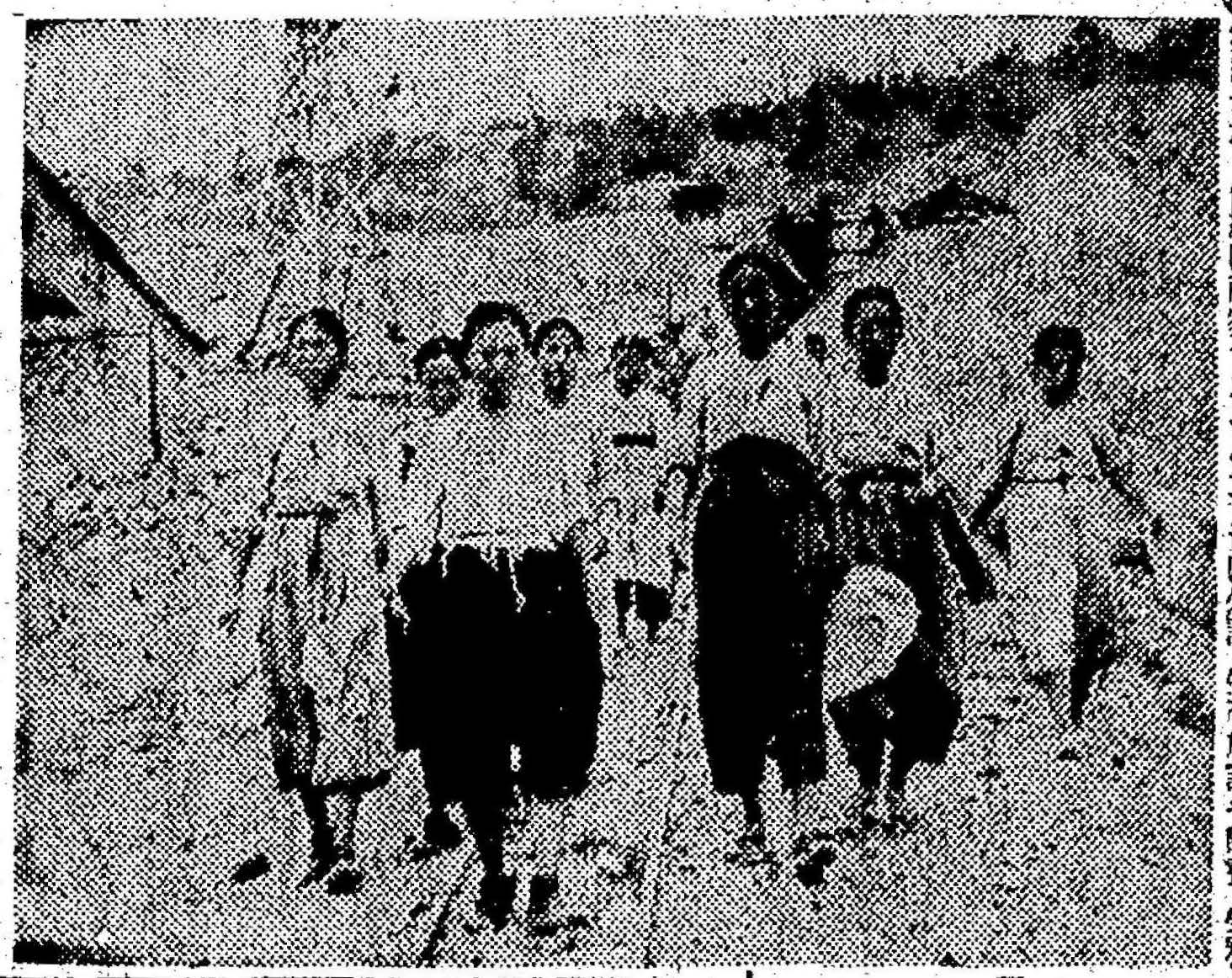
Korean forced laborers worked the Gyeongsan cobalt mine under Japanese control from 1940 to 1945, which later became the site of a massacre of political prisoners in 1950 at the onset of the Korean War
2024-08-08
283
1422
This article from 1943 highlights Korean forced laborers in a Japanese-owned cobalt mine located in what is now Gyeongsan City. While recent news coverage has covered the controversy over the Korean forced laborers in the Sado Gold Mine, this article reminds us that, for every prominent mine like Sado Gold Mine, there were probably many other Imperial Japanese mines like it that receive much less public attention, but were also egregious in their use of Korean forced labor.
According to the article, the laborers’ work environment was heavily militarized like a prison camp. Like in the rest of colonial Korea, everyone was required to perform the mandatory daily 7 am and 12 noon prayers. There were usually loud sirens marking those two times of the day, and you had to immediately stop what you were doing and perform the prayers. The 7 am Kyūjō Yōhai ritual (宮城遥拝) involved deeply bowing several times in the direction of the Imperial Palace in Tokyo while standing, vowing loyalty to the Emperor. The noon prayer was a moment of silence in honor of the Imperial Japanese soldiers.
The laborers had only three rest days each month. These ‘weekends’ were filled with mandatory indoctrination sessions to enforce State Shinto religious practices and Japanese language classes. In a typical colonial tactic of pitting colonized people against each other, the laborers were divided into ‘workplace patriotic groups’. Collaborators were recruited and appointed to control each group on behalf of the colonizers.
These patriotic groups were pitted against each other in competitions to curry favor with their bosses. They competed to be the most productive, efficient, and punctual in the mine. Fierce competition led one group to propose working for free on public holidays and donating their entire day’s pay toward the war effort. This obsequious proposal was implemented and enforced across the entire labor force.
Patriotic groups (JP: aikoku-han, KR: aeguk-ban, 愛國班) were established not only in this mine, but also in neighborhoods and companies all over Korea to enforce colonial rule. All patriotic groups belonged to the Korean Federation of National Power (国民総力朝鮮連盟, 국민총력조선연맹), which functioned as the one and only political party of Korea.
After the Korean War, the mine became the site of the Gyeongsan Cobalt Mine Massacre (Namu Wiki article link) of July to September 1950, when the South Korean government brought political prisoners to the mine, beat, shot, and burned them with flame-throwers, and threw down the mine shaft, which was then dynamited to obscure evidence. During the military dictatorships and repressive regimes of President Rhee Syngman, General Chun Doo-hwan, and President Park Chung-hee, these atrocities were kept secret and surviving family members silenced. It was only in the year 2000 under the presidency of Kim Dae-jung that a special law related to the Jeju Uprising, another Korean War massacre site, was passed and all bereaved families members were finally encouraged and invited to register as such.
[Translation]
Gyeongseong Ilbo (Keijo Nippo) August 28, 1943
**Visiting the facilities to witness the increased production of special minerals (2)**
*The Noble Drug of the Ore World*
*Increased Production of Cobalt Ore*
**The Story of the Patriotic Mine**
It was January 1940 on a snowy day. A person from mainland Japan, accompanied by a hunting dog setter, was seen near the site of an abandoned gold mine in Amnyang-myeon (압량면, 押梁面) of Gyeongsan County, North Gyeongsang Province, which had long been idle. While casually approaching the abandoned mine with a hunting rifle on his shoulder, the dog, which had been walking ahead, suddenly fell into the shaft of the former mine, which had filled with groundwater to a depth of more than forty feet, turning it into a well. The man hurriedly ran to a nearby village for help and eventually managed to rescue his dog. During this process, he noticed a strange ore among the high piles of waste rock by the roadside. This ore turned out to be cobalt ore, which has since come into the spotlight as a prominent mineral, and the hunter from mainland Japan was none other than Mr. Shūzō Ninomiya, the owner of the current Patriotic Cobalt Mine.
◇
Initially, world production of cobalt was thought to be limited to certain regions: Canada 29%, France 26%, India 12%, and British Rhodesia (in Southern Africa) 33%. Although there were minor yields in Yamaguchi, Hyōgo, and Ehime Prefectures in Japan, and small quantities associated with gold and silver in arsenopyrite in Korea, these were so minimal that they were not economically viable to exploit.
However, cobalt, a precious resource often compared to a noble drug, is crucial for manufacturing scientific weapons under wartime conditions, serving as a special steel raw material with low wear for pistons, shafts, and cylinders. It is also an essential resource as a catalyst for synthetic oil and rubber. Therefore, the discovery of a vein with an estimated grade of [censored]% and an extension of [censored] kilometers was a significant stimulus to the concerned parties.
Thus, in January 1941, the “Patriotic Cobalt Mine” was formally registered. Coincidentally, the beloved dog that had led to the discovery of the mine died suddenly, adding a potential future legendary element to the mine’s story.
Regardless, the military took a keen interest in the mine due to the ongoing war situation, and rapid production expansion began in January 1942 with their support.
◇
The journalist was granted special permission to tour the site with Mr. Ninomiya. While the exact production volume, facilities, plans, and labor details cannot be disclosed, it was astonishing to see the development progress achieved in just two years since securing a loan of [censored] million yen.
Out of the current labor force of [censored] people, [censored] are women and girls from the workers’ families, and their good attendance record and operating rate of [censored]% reflect their deep commitment as wartime mine workers. This achievement is undoubtedly the result of enthusiastic guidance and constant training, as demonstrated by the military-style command of “Kiwotsuke! (Attention!)” upon the journalist’s arrival at the office, followed by the mine owner’s acknowledgment with “Keirei! (Salute!)” and the order to “Yasume! (At ease!)” before resuming work.
The daily routine includes a morning worship similar to that at Tatsushiro Mine, with Kyūjō Yōhai (prayers to the Imperial Palace), worshiping the mountain gods, silent contemplation, followed by instructions from the section managers. On the 8th, 18th, and 28th of each month, special training days are held with returning veteran lieutenants as instructors, conducting individual and group training. The managers also rotate through the different sections and conduct lectures on current events. What is particularly noteworthy about this mine are the workplace patriotic groups. These groups are organized by teams at each site with the team leader becoming the patriotic group leader. The groups hold informal Japanese language classes during lunch and meetings to facilitate communication between management and workers.
It goes without saying that all employees and workers wear traditional jika tabi footwear and kyahan leg wraps. However, they also uniformly have shaved heads, a practice initiated by the staff to set an example, which quickly spread throughout the workplace patriotic groups, resulting in everyone having shaved heads.
As an example of upward communication, during the recent collection of donations for the death of Admiral Yamamoto and the heroic defense of Attu Island by General Yamasaki‘s forces, the workplace patriotic groups originally proposed a plan to contribute a certain percentage of income. However, a decision was made at a meeting of team leaders to work on public holidays without pay with the resolve to “die in battle on any day”, donating the entire day’s income as a contribution. This resulted in a sacred sum of 1,200 yen being donated.
These efforts reflect the effectiveness of the workplace groups and the manifestation of a total mobilization movement from the ground up, also showing that they recognize the current wartime circumstances.
However, the mountain is still young. With the expansion of production facilities in full swing as the increased production period approaches, material procurement is progressing smoothly, and groundbreaking production facilities are expected to be completed soon. Plans for special bonuses during the increased production period with competitions for rewards for high work efficiency, perfect attendance, and no tardiness are also finalized. As the workers’ enthusiasm for the upcoming increased production period reaches a peak, the mine is thriving with activity, unaffected by the baseless rumors circulating in the streets. In the near future, production is expected to double, which aligns with the urgent needs of wartime Japan. (Special Correspondent Watanabe)
*Photo: Female mine workers descending the mountain*
[Transcription]
京城日報 1943年8月28日
特殊鉱増産を現地に視る(2)
鉱石界の高貴薬
コバルト鉱に増産の槌
報国鉱山の巻
昭和十五年の一月、それは雪の日であった。慶北慶山郡押梁面の、今は休山と化した一金山の廃坑附近に猟犬セッターを連れた一内地人の姿が見受けられた。猟銃を肩に何気なく廃坑に近づいて二、三歩...途端に一足前を進んでいた愛犬が深さ四十尺余地下水が溜まって井戸と化した曾ての廃坑内に転げ落ちてしまった。慌てて附近の部落に駆け戻り助けを求めた上漸く愛犬を救い上げたが、その際路傍に堆高く積まれたズリの中に発見された異様な鉱石に彼の目は輝いたのである。その鉱石こそ今や時代の脚光を浴びる特殊鉱界の花形コバルト鉱であり、狩猟姿の一内地人とは、言う迄もなく現報国コバルト鉱山鉱業主二宮衆三氏であった。
◇
元来、コバルトの世界生産はカナダ29%、仏蘭西26%、印度12%、南阿の英領ローデシア地方33%という比率で他の地域からは産出しないものといわれていた。尤も本邦内にも山口、兵庫、愛媛の各県下に多少の産出を見、我が朝鮮でも硫砒鉄鉱中の金、銀に多少随伴するのではあるが、それらはあまりにも微量であって、その殆どが採算上企業化し得ないものである。
而もこのコバルトは摩滅度の小なる特殊鋼原料としてピストン、シャフト、シリンダー等決戦下の我が科学兵器製造上、高貴薬にも比すべき貴重資源であり且つ人造石油、合成ゴムの触媒としても極めて重要資源なのである。斯かる折柄、品位〇、〇%推定鉱脈延長〇キロの同鉱山が発見されたことは、関係方面に対し大きな衝動を与えるには十分であった。
かくて十六年一月『報国コバルト鉱山』として正式に登録されたが、この登録の完了と同時に不思議にもかの愛犬が頓死したことは、この山の発見に絡む一挿話として、或は将来に於ける山の伝説的物語ともなろうか。
さて、それは兎も角として、時局柄この山へ最も関心と期待を寄せたのは軍部で、その援助によって十七年一月始業、急速な増産が進められているのである。
◇
記者は特に許されて鉱主二宮氏に案内され、仔細に視察することを得たが、遺憾ながら茲にその生産量は勿論、生産施設や計画、労務について記述することを得ない。併しその開発ぶりが、〇百万円の融資を受けて以来僅か二年の間にこれ程迄に急速に進められた、ということについては驚嘆せざるを得なかったわけだ。
現在稼働労務者〇〇〇名のうち〇〇〇名はその家族たる婦女子であり、その出勤率を含めてもなお稼働率〇〇%という好成績は、流石に彼等が時局鉱山労務者としての認識に徹底していることを物語るものであるといえよう。勿論その稼働率の好成績も熱意ある指導と絶えざる錬成の結果によるものであることは断るまでもない。それは記者が鉱主に案内されて事務所に到着したとき先ず『気を付けっ』の軍隊式号令に迎えられたことによっても判るのである。そして『敬礼っ』鉱主の答礼を以て『休めっ』再び執務は続けられるという調子である。そこで、茲の錬成を簡単に紹介しよう。
始業前の朝拝は達城鉱山同様、宮城遥拝、山神拝礼、黙祷、係課長の訓示であるが、毎月八、十八、二十八の日は特別錬成日として帰還勇士の中尉を教官として各個教練、部隊教練を実施している。そして各課長が各区を巡回、時局講演を行っているが特に変っているのは職場愛国班である。それは各現場の組毎に班を組織し組長が班長となり昼食時、現場に於いて固苦しくない国語の教授を行うほか随時常会を開き上意下通と下意上通に努めているのである。
職員も鉱員も全部が地下足袋、巻脚絆であることは云わずもがなだが、それらの全員がまた一様に丸刈りであることもこの職場愛国班の徹底による結果である。即ち職員の側から提唱された丸刈り励行は職員の率先垂範と共に全職場愛国班に伝えられ、その申合せとなって瞬く間に全員が丸坊主化してしまったのであった。
また下意上通の一例として、去る日山本元帥の戦死、アツツ島山崎部隊の玉砕に際して行われた健艦献金には当初事務所側から収入の幾パーセント宛かを拠出という形式による旨を職場愛国班に図ったのであるが職場班班長会議の結果、公休日を休まず『一日戦死』の覚悟で働き抜き、その全収入を献金としようということに一決。即座に全班に伝えられ、その結果は一千二百円の聖なる汗の結晶が献金されたのである。
これらは職場班の効果であると共に所謂下より盛り上がる総力運動の顕現であり同時に時局認識の表われとしても注目に値するものであろう。
しかし山はまだ若い。増産期間を目前に控えた今、山は生産施設の拡充に多忙の真っ最中だ。幸い資材の入手は順調で近く画期的増産施設完成の見透しもついている。増産期間中の特例給与として職場能率競争、無欠勤、無遅刻者への表彰方法等の計画も出来上がった。初めて迎える増産期間への労務者の情熱も愈々高潮し、世にこの山のことども発表されざるが故の、巷間に流布される愚かなデマを他所に、山は極めて明瞭に活気づいている。近い将来にその出鉱量は恐らく倍加するであろう。そしてそれはまた戦時日本の切実な要求でもあるのだ。(渡辺特派員記)【写真=山を降りる鉱婦たち】
Source: https://archive.org/details/kjnp-1943-08-28/mode/1up
